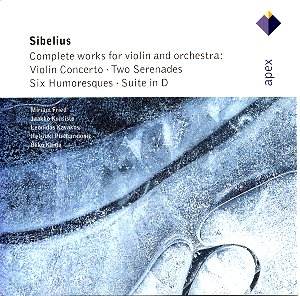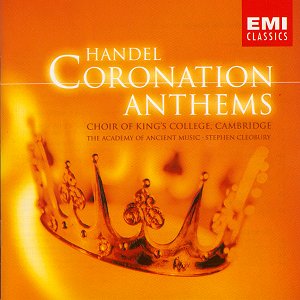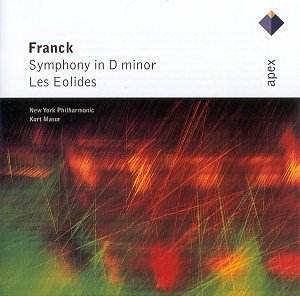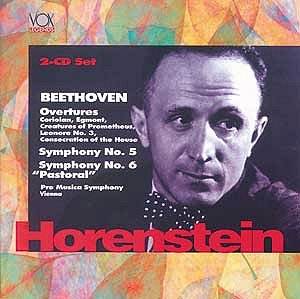 Composer: Jean Sibelius
Composer: Jean Sibelius
Works: Complete works for violin and orchestra, including Violin Concerto, Serenades Nos. 1 & 2, Six Humoresques, Suite in D minor
Performers: Miriam Fried (violin), Jaakko Kuusisto (violin), Leonidas Kavakos (violin), Jari Valo (violin), Helsinki Philharmonic Orchestra, Kuopio Symphony Orchestra, Tapiola Sinfonietta, Ostrobothnian Chamber Orchestra
Recording: Various recordings from 1988 and 1998
Label: Apex
Jean Sibelius, a towering figure in the late Romantic landscape, wove his Finnish heritage and the natural beauty of his homeland into a tapestry of music that resonates with profound emotional depth and lyricism. His complete works for violin and orchestra, while limited in number, encapsulate his unique understanding of the instrument, forged through his own experiences as an accomplished violinist. This collection presents an opportunity to delve into the lesser-known corners of Sibelius’s output, coupling the iconic Violin Concerto with charming yet underappreciated gems like the serenades and Humoresques.
Miriam Fried’s interpretation of the Violin Concerto, recorded with the Helsinki Philharmonic Orchestra under Okko Kamu, stands out for its emotional sincerity and technical assurance. The recording, dating back to 1988, captures Fried in a moment of seasoned artistry, having already garnered acclaim from her early engagements. Fried’s nuanced approach is particularly evident in her handling of the first movement’s lyrical passages, where she pulls back the tempo to accentuate the music’s emotional weight. While some may find this interpretative choice a touch indulgent, it undeniably adds a characterful dimension to the performance. The slow movement emerges as a highlight, eloquently rendered, though Fried’s tone lacks the crystalline purity found in Kyung-Wha Chung’s notable interpretation on Decca or Cho Liang Lin’s work on Sony.
The finale, however, presents a more contentious interpretation. Fried and Kamu opt for a relatively moderate tempo, which, while rich in sonority, may sacrifice some of the exhilarating drive that is often associated with this closing movement. Such decisions reflect a thoughtful, albeit conservative, approach to Sibelius’s music, suggesting that Fried prioritizes emotional depth over sheer exhilaration. This nuanced performance, while not without its limitations, remains compelling and ultimately rewarding.
Leonidas Kavakos’s interpretation of the Six Humoresques demonstrates an equally profound connection to Sibelius’s idiom. Known for his affinity with the composer, Kavakos delivers these less frequently performed pieces with a vibrant understanding that showcases their charm and wit. Accompanied by the Tapiola Sinfonietta, his interpretations are imbued with a lightness and precision that breathe life into the music. The orchestra complements Kavakos’s playing beautifully, providing a rich backdrop that enhances the intricate dialogues between soloist and ensemble.
The recordings of the two Serenades and the Suite in D minor, featuring Jaakko Kuusisto and Jari Valo, while competently performed, do not quite reach the same level of interpretative depth. The Suite, completed late in Sibelius’s life, is less inspired compared to his earlier works. Both performers and orchestras execute the music with an adequate but somewhat uninspired fidelity that fails to elevate the material. The sound quality across the recordings is commendable, with a balanced mix that preserves the clarity of the solo lines against the orchestral textures, though the booklet’s layout leaves room for improvement in presentation.
The collection serves as a valuable exploration of Sibelius’s contributions to the violin repertoire. While some performances may not reach the heights of interpretative genius found in the Violin Concerto or Kavakos’s Humoresques, the overall assemblage showcases the diversity and charm of Sibelius’s works for violin and orchestra. Each performance contributes to a fuller understanding of the composer’s oeuvre, making this collection a worthy addition for both enthusiasts and newcomers to Sibelius’s rich musical landscape.



